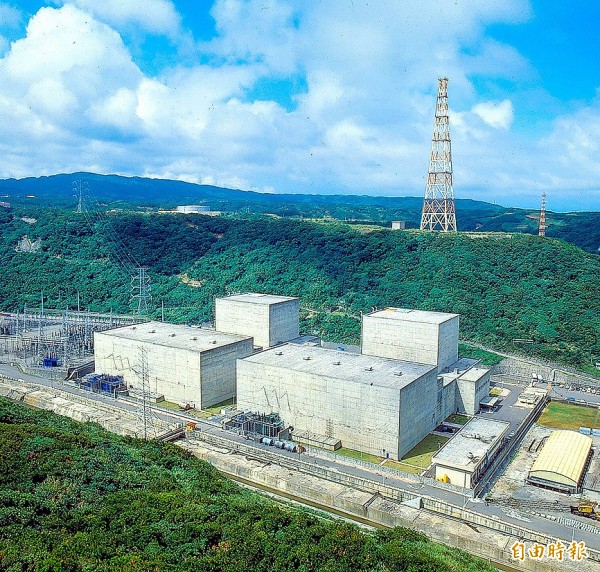《TAIPEI TIMES》 Jinshan plant decommissioning plans encounter opposition at EIA meeting

The nation’s oldest nuclear power plant, the Jinshan Nuclear Power Plant in New Taipei City’s Shihmen District, is pictured in an undated photo. Photo courtesy of Taipower
DISPOSAL: Local officials opposed Taipower’s plan to build an indoor storage plant for spent fuel rods, saying it might turn into a permanent storage site
By Lin Chia-nan / Staff reporter
The Environmental Impact Assessment (EIA) Committee yesterday held its first review of state-run Taiwan Power Co’s (Taipower) plan to decommission the nation’s first nuclear power plant, with critics voicing opposition to the utility’s recommendations on disposal of spent fuel rods and other nuclear waste.
The Jinshan Nuclear Power Plant’s two reactors were stopped in 2014 and last year respectively, and their decommissioning processes are scheduled to start from Dec. 5 and July 15 next year when their 40-year licenses are due to expire.
The utility’s plan to decommission the plant in New Taipei City’s Shihmen District (石門) passed an Atomic Energy Council (AEC) review in June last year and was forwarded to the EIA committee for further review.
Even if the Environmental Protection Administration does not approve the plan before the scheduled date, Jinshan’s No. 1 reactor would still be shut down, AEC Department of Nuclear Regulation specialist Tsang Yi-chun (臧逸群) said.
The plan comprises four stages that would take 25 years: preparations for demolishment (eight years), demolishment and construction of new storage facilities for spent fuel rods (12 years), radioactivity monitoring (three years) and land restoration (two years), Taipower said.
The decommissioned plant would have 7,400 spent fuel rods, 26,000 tonnes of waste facilities, 53,000 tonnes of waste steel products and 3,000 tonnes of waste cables, it said.
The utility said it would temporarily put the spent fuel rods at the plant’s outdoor dry storage site and shift them to an indoor dry storage plant when its construction is finished by 2028.
However, Wild at Heart Legal Defense Association lawyer Tsai Ya-ying (蔡雅瀅) said the utility should put the used fuel rods directly into the indoor storage plant, saying the outdoor site runs the risk of being damaged by landslides from adjacent hills.
Tsai also urged Taipower to reconsider its plan to build an incinerator to burn low-level radioactive solidified waste and to clarify the potential risks of burning nuclear waste.
Representatives of the New Taipei City Government, as well as the Shihmen and Sanjhih (三芝) district offices, all voiced opposition to the utility’s plan to build an indoor storage plant, saying it might store the nuclear waste at the plant permanently as a final disposal site for them is hard to find.
Committee members also raised concerns about Taipower’s inadequate preparations for “compound disasters” and the potential impact on marine creatures living off the north coast of Taiwan.
The committee asked Taipower to provide supplementary documentation about its response strategy for disasters, demolition plan, waste disposal and others by Nov. 30 for its next review.
新聞來源:TAIPEI TIMES



















